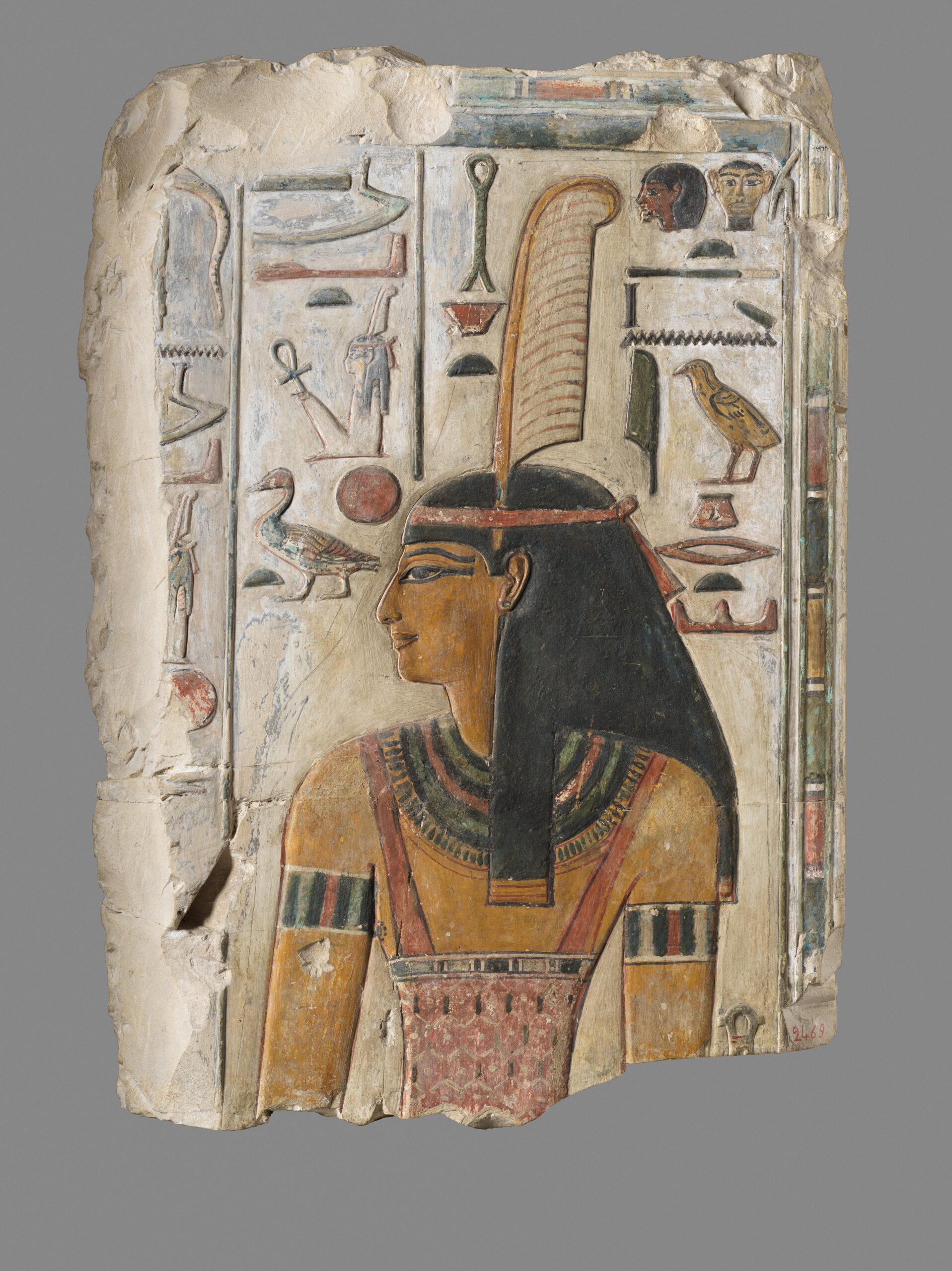The **Metropolitan Museum of Art** in New York City has unveiled its latest exhibition, titled **“Divine Egypt,”** showcasing over **200 artifacts** that illuminate the rich tapestry of ancient Egyptian mythology. This exhibition highlights the pantheon of deities worshipped for millennia, offering visitors a glimpse into a world where gods and goddesses played pivotal roles in daily life and the afterlife.
Exploring the Pantheon of Egyptian Deities
Among the prominent figures featured is **Hathor**, one of the most powerful goddesses of ancient Egypt, whose origins trace back to around **2600 BCE**. Adorned with cow horns and a sun disk, her name translates to “mansion of Horus,” linking her to an even older celestial deity. Visitors will encounter a limestone relief depicting her wielding a scepter, labeled as “Hathor, Chieftainess of Thebes,” and another column showcasing her visage in four directions, titled “Hathor of Four Faces.”
In the same vein, the exhibition introduces **Horus**, a vital figure associated with kingship and pharaonic strength. According to ancient teachings, he inherited the crown of the gods from his father, **Osiris**, after overcoming his uncle **Seth**, represented by a composite animal with a unique appearance. Horus is depicted wearing the double crown, symbolizing his dominion over a united Egypt.
Another essential deity, **Anubis**, presides over the dead. The exhibition describes him as the god who oversees mummification and guides souls into the afterlife. A striking diorite statue of Anubis greets visitors, its imposing presence reflecting the solemnity of the grave. Another statue, recovered from an animal necropolis, illustrates the reverence Egyptians held for their pets, as many were laid to rest in elaborate catacombs.
The goddess **Maat**, representing truth and justice, also features prominently. Her name refers to a complex concept encompassing rightness and social order. Maat is often depicted with a feather, which is used to weigh the hearts of the deceased, determining their fate in the afterlife. A breathtaking relief from approximately **3,500 years ago**, discovered in the tomb of **Seti I** in the Valley of the Kings, showcases her alongside other gods, adorned with intricate hieroglyphics.
A Journey Through Time and Belief
The exhibition’s curator, **Diana Craig Patch**, emphasizes the vastness of the Egyptian pantheon, which consisted of approximately **1,500 gods** worshipped over **3,000 years**. She notes that the ancient Egyptians embraced this multiplicity, finding meaning in their diverse deities.
Among the oldest goddesses, **Neit** stands out. Her origins are shrouded in mystery, represented by symbols such as crossed arrows and click beetles. Neit, wearing the red crown of Lower Egypt, is said to have inspired women of the **First Dynasty** to incorporate her name into their own. Her son, the crocodile god **Sobek**, is also featured, with a statue that bears an inscription urging strength in her “Enclosure.”
Intriguingly, the exhibition includes representations of lesser-known deities, such as the cobra goddess whose name signifies “She Loves Silence,” and a seated ram god that commands reverence from worshippers. A monumental scarab from the **Ptolemaic period** is also on display, symbolizing the sun’s journey across the sky.
“Divine Egypt” offers more than a collection of artifacts; it provides an immersive experience into a world where gods were tangible aspects of life. The exhibition invites viewers to reflect on how a society that revered a multitude of deities also contributed to the legacy of monotheism, as the notion of a single, invisible God emerged from the same cultural milieu.
The exhibition runs at the **Metropolitan Museum of Art** until **January 2024**, promising to captivate audiences with its rich historical narratives and stunning visual art.
